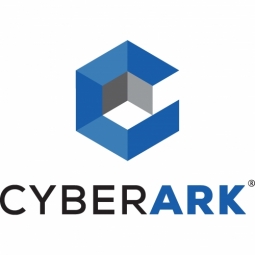公司规模
Mid-size Company
地区
- America
- Europe
国家
- Brazil
- United Kingdom
产品
- CyberArk PAS
- Alero
技术栈
- Azure
- SharePoint
- JAMS
实施规模
- Enterprise-wide Deployment
影响指标
- Cost Savings
- Customer Satisfaction
- Productivity Improvements
技术
- 网络安全和隐私 - 身份认证管理
- 网络安全和隐私 - 安全合规
适用行业
- Professional Service
适用功能
- 商业运营
服务
- 系统集成
- 培训
关于客户
The customer is a small IT shop with a few hundred people and a company size of a couple of thousand employees. Despite being a small company, they have a global presence with offices and servers in multiple locations, including Brazil and London. They rely heavily on vendors for various operations and are looking to improve their security and access management processes.
挑战
The company faced challenges with their existing SharePoint workflows and DevOps processes, which were frequently breaking. They needed a more reliable and efficient way to manage privileged access without the need for submitting tickets, going through workflows, or waiting for approvals. Additionally, they had a tight deadline to meet an external customer requirement for privileged access management, which included signing the purchase order, installing the solution, and managing a larger number of servers than initially anticipated.
解决方案
The company chose CyberArk PAS after evaluating five different toolsets, including Quest. CyberArk's marketplace and out-of-the-box capabilities were crucial in getting stakeholder buy-in. The solution provided a standardized approach to security and reduced risk-access across the company. The DNA scan feature was particularly valuable, allowing the company to quickly identify and manage accounts. The initial setup was straightforward, well-documented, and could be handled by junior engineers. The solution also offered scalability, both geographically and in terms of disaster recovery capabilities. The company is also excited about Alero for third-party access management, which is crucial given their reliance on vendors.
运营影响
数量效益

Case Study missing?
Start adding your own!
Register with your work email and create a new case study profile for your business.
相关案例.
Case Study
SET Creative Ditches Google Vault for Datto Backupify
When Kienholz first started at SET, the staff was using Microsoft Outlook for email with no form of data backup. It became apparent that something needed to change as the staff was often burdened with trying to recover emails from departed employees. Kienholz transitioned the team to Google’s Gmail and implemented Google Vault for backup purposes. While SET employees quickly adjusted to Gmail, which many use for personal email, the same could not be said for Google Vault. “Unlike most Google products, Vault was not user friendly at all. It’s very hard to search for items. We never really figured out how to do a restore either,” explained Kienholz. Due to SET’s work with high-profile brands, projects often go through many rounds of revisions right down to the eleventh hour. This means that every bit of information - especially data living in project managers’ emails - is crucial to delivering clients a polished design at deadline.
Case Study
Infosys achieves a 5–7 percent effort reduction across projects
Infosys, a global leader in consulting, technology, and outsourcing solutions, was facing significant challenges in application development and maintenance due to its distributed teams, changing business priorities and the need to stay in alignment with customer needs. The company used a mix of open source, home-grown and third-party applications to support application development projects. However, challenges resulting from distributed teams using manual processes increased as the company grew. It became more and more important for Infosys to execute its projects efficiently, so they could improve quality, reduce defects and minimize delays.
Case Study
Arctic Wolf Envelops Teamworks with 24x7 Cybersecurity Protection and Comprehensive Visibility
Teamworks, a leading athlete engagement platform, faced rising cyberthreats and needed enhanced visibility into its network, servers, and laptops. With software developers connecting from all over the world, the company sought to improve its security posture and position itself for future growth. The company had a secure platform but recognized the need for a more proactive solution to identify gaps within its technology infrastructure. Data exfiltration and malicious access were top concerns, prompting the need for a comprehensive security upgrade.
Case Study
Sawback IT and Datto Save Client From a Costly Mistake
Ballistic Echo, a software development house, faced a critical challenge when human error led to the deletion of thousands of lines of unique code. This incident occurred before the code was pushed to source control, resulting in significant loss of time, revenue, and work. The previous file-level backup solution they used was slow and inefficient, making it nearly impossible to manually recreate the lost work. The need for a more reliable and efficient business continuity solution became evident to avoid such disasters in the future.
Case Study
Opal Helps Customers Shine Thanks to Datto
SP Flooring & Design Center faced a ransomware attack that encrypted and locked their files. The attack was initiated through a compromised service account set up by an outside vendor. The ransomware infection was isolated quickly, but there was a concern about the extent of the data at risk. The company had backups in place but was unsure of how much information was compromised. The situation required immediate action to prevent further damage and restore the affected data.
Case Study
Pipeline Insight Case Study: YARCDATA
YarcData faced challenges in determining the conversion rates of prospects into customers through various marketing efforts and identifying the source of its leads. They wanted to know the percentage of opportunities in the sales pipeline that came from different marketing events, web downloads, or self-sourced sales opportunities. Additionally, they needed the ability to drill down into the data to guide where to allocate more marketing dollars based on the success of previous efforts. Previously, YarcData relied heavily on spreadsheets and Salesforce.com reports, which made it difficult to extract the exact information they needed. This reliance on spreadsheets represented about 70% of their data presentation.







